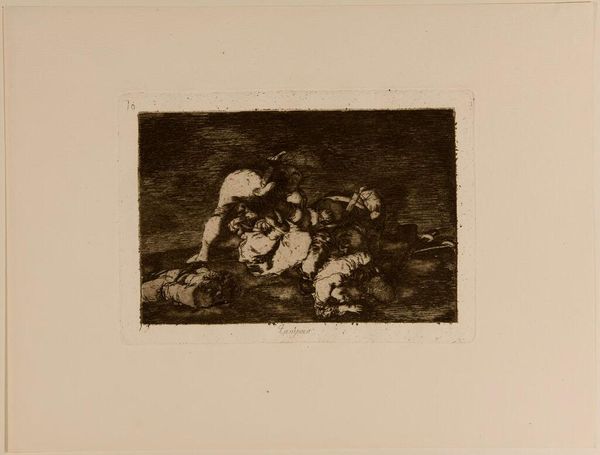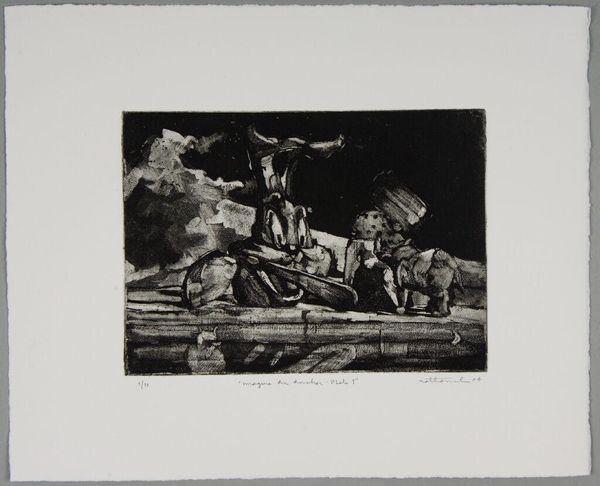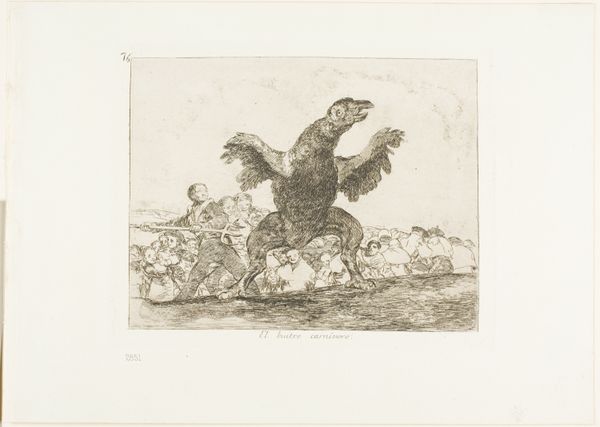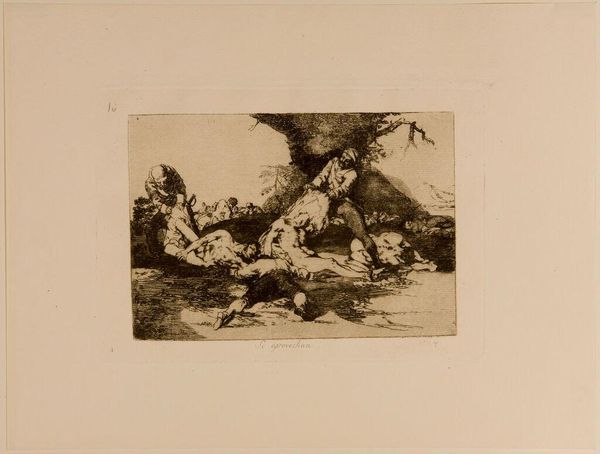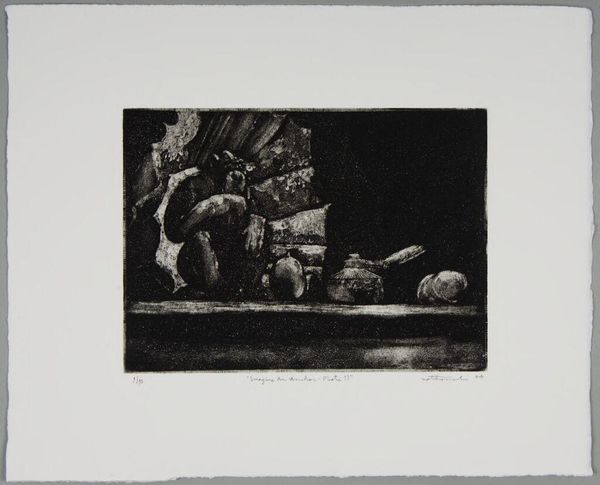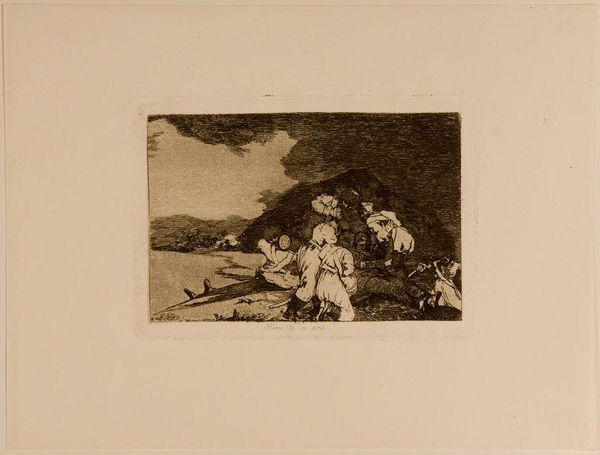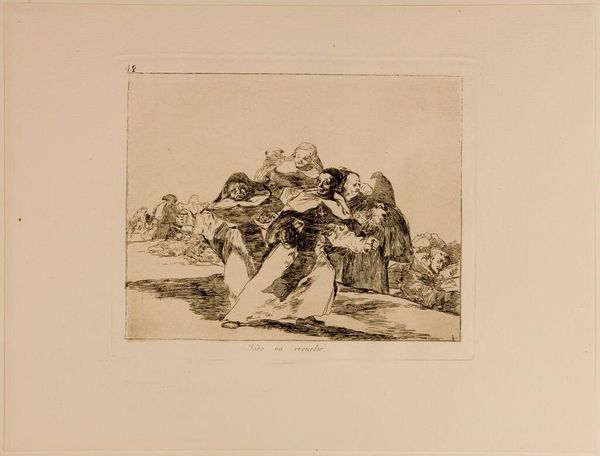
Copyright: CC0 1.0
Curator: Here we have Goya's "The Carnivorous Vulture," an etching from the Harvard Art Museums. What strikes you immediately? Editor: Bleakness. The oppressive, almost suffocating weight of that grotesque bird. It feels like a nightmare distilled into ink. Curator: Precisely. The etching technique enhances this feeling, doesn't it? Look at how Goya uses aquatint to create those ominous shadows. Editor: It's brilliant! The vulture dominates, while the humans are reduced to a faceless, struggling mass. I see it as a stark comment on power and subjugation. Curator: I agree. Goya often used animal imagery to critique human behavior, and here, the vulture embodies predatory exploitation. Editor: The composition itself is jarring – that diagonal line dividing the vulnerable crowd from the looming threat. Curator: It forces us, as viewers, to confront the uncomfortable reality of vulnerability. In short, Goya delivers a brutal, unforgettable image. Editor: Yes. It's a haunting reminder of the darkness we're capable of, both individually and collectively. And strangely powerful.
Comments
No comments
Be the first to comment and join the conversation on the ultimate creative platform.



